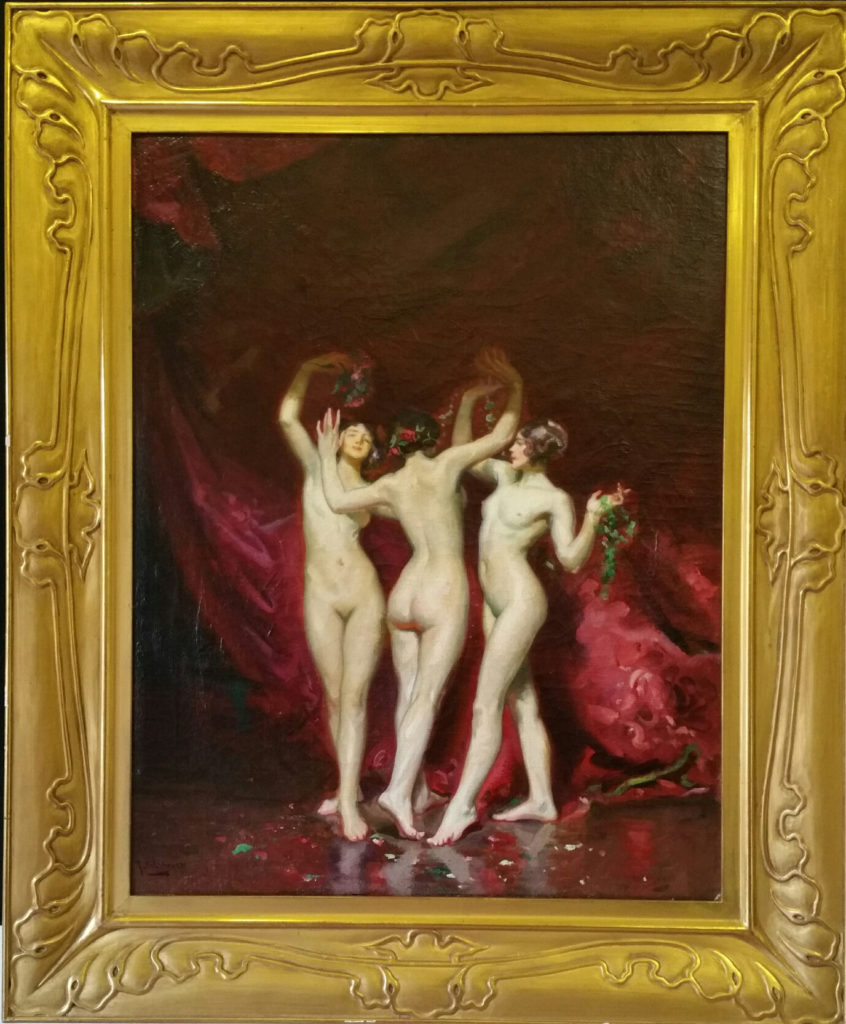
Oil on Canvas 36 x 28 in.
Three Graces by Julius Rolshoven
Born on October 28, 1858, in Detroit, Julius Rolshoven, the son of a jeweler, initially attended the Cooper Union Art School in 1876 after being rejected by the National Academy of Design. In 1878, he continued his artistic education at the Düsseldorf Academy under the guidance of Hugo Crola, a portraitist. Afterward, Rolshoven moved to Munich, where he studied under Ludwig von Löfftz and became one of the “Duveneck Boys.” During this period, he spent a year in Venice and some time in Florence, with his work “Florentine Boys” (1884) displayed at the Detroit Institute of Arts.
His artistic journey led him to Paris, where he studied at the Académie Julian under the tutelage of Bouguereau and Robert-Fleury. In 1885 and 1889, his works were featured in the annual exhibitions of the National Academy, marking a significant achievement in his career. In 1889, Rolshoven was awarded a second-class silver medal at the Paris Universal Exposition. Additionally, he gained recognition for conducting a successful art class for an international group of students.
Subsequently, Rolshoven relocated to London in 1896, but tragedy struck when his wife passed away the following year. He moved to Castello del Diavolo, a castle near Florence, where he continued to paint portraits and genre scenes and taught art. In 1900, his painting “My Great-grandmother’s Finery” received an Honorable Mention at the Exposition Universelle, and a bronze medal was awarded to him at the Pan-American Exposition in Buffalo the following year.
In 1907, while in Florence, Rolshoven crossed paths with William Merritt Chase and his Art Students League students. Displaying his enduring aesthetic curiosity, he embarked on a journey to Northern Africa in 1910, resulting in a series of Tunisian paintings. The University of New Mexico holds one of his works, “Tunisian Bedouins.”
During World War I (1914-1918), Rolshoven left France and exhibited an Italian scene at the Panama-Pacific International Exposition in 1915. A year later, he remarried and ventured to Taos, New Mexico, where he established a studio and became well-known for his Southwestern Indian-themed paintings. In 1917, he was elected an associate of the Taos Society of Artists, and he regularly returned to Taos until his passing in New York City on December 7, 1930.
In his later years, Rolshoven’s art took on a sense of classicism, as seen in “Donna Tosca,” which he exhibited at the National Academy of Design in 1926. The composition and brushwork of the painting evoke a departure from his earlier work as a “Duveneck Boy.”